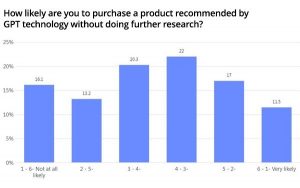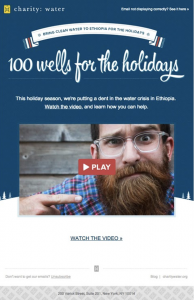I’ve always been a little bit of a backward thinker, which is probably why I became a video producer. It may sound strange, but the key to producing a successful video is to start at the end — figuring out the end goal for your video before you even start capturing anything. And the key to making sure your video gets the most views is often tied to what you do with it once the video is completed.
Too often, people create a shiny, highly entertaining video and then bury it on their website. Then they’re shocked that nobody finds it. Don’t just let your video sit there. Instead, think like a producer. Think backward and identify the right things to do with your video when you finish it.
Starting with a Strategy
At times, I’ve found myself clicking endlessly on a website trying to locate a video only to find out that the video wasn’t actually posted on the site. The only way to find it is to click on the YouTube button at the bottom of the page. Once you do find the video, you see it only has a handful of views.
Creating a video marketing strategy is non-negotiable for success. There are way too many companies out there creating great video content for you to just “wing it.” With that in mind, here are 4 things that you should take into consideration to make sure your videos get the most views possible.
1. What’s the Goal of Your Video?
When you are getting ready to create a video, it’s important to start with the end in mind. Start by asking yourself: “What are we going to do with the video?”
- Will it be a featured piece of your homepage or other website pages?
- Will it be primarily for social media? For ads, stories, or in your regular news feed?
- Is it going to be used to recruit new employees on your careers pages?
- Is your sales team going to use it as a sales tool?
There are so many different types of video out there today and not all videos are created equally. Knowing where and how you’re going to use your video will determine the content, length, style, voice, etc. of your video.
Thinking through the end game of your video can also help you create a post-production promotion plan that actually gets results.
2. Leverage Alternative Video Hosting Platforms
Many people immediately assume that YouTube is the best place to host videos. They’re not wrong. Over 5 billion videos are viewed on YouTube every single day. So, while it’s definitely in your best interest to make sure your content is discoverable through YouTube, it’s not the best tool for every job.
There is a wide variety of different video hosting platforms that are available on the market today. Often, YouTube is not the preferred software when you are embedding videos on your website.
It’s important to understand the pros and cons of different video hosting platforms to understand which one is the best for your audience and business needs. Every single one of these options has pros and cons.
| Category | YouTube | Wistia | Vimeo Pro | Vidyard | Brightcove | Sprout Video |
| Customizable | No | Yes- Ability to change the player’s color | Yes, ability to change the player’s color and add company logo | Yes | Yes- but can be hard to figure out | Yes- Size and colors of the video player, page layouts, and themes |
| CTA features | No | Yes | No | Yes | Yes | Yes- Post Play only |
| User Permission Settings | Yes | Yes | Yes: Up to 3 members | Yes | Yes | Yes: 25-Unlimited logins depending on price plan |
| Integrations | Limited: Google Analytics is the only one without using a 3rd party application | HubSpot, MailChimp, Marketo, Pardot, WordPress and Google Analytics | Limited: Adobe and Google Drive | Eloqua, Marketo, Salesforce, Sales Cloud, MailChimp, HubSpot Chatter, HootSuite, Google Analytics, and more | Oracle, HubSpot, Eloqua | Constant Contact, MailChimp, Drip, Aweber, Campaign Monitor, Act-On, Hubspot, Intercom, Vertical Response, and Infusionsoft |
| Analytic Tools | Basic: Total views, watch time, retention | Advanced: heat mapping to show when and where viewers stopped, viewing trends, email capturing in videos | Average: live graphs of plays, likes, comments | Advanced: Automatically populated lists of contacts, filter views by plater, A/B testing thumbnails, individual analytics, heat maps | Advanced: Individual analytics, custom reports, real-time updates, how video is being viewed (browser, device, etc) | Advanced: Every plan includes detailed analytics. Heatmaps, graphs, viewer tracking, location data |
| Bandwidth | Unlimited: but unless you are a YouTube partner, video length is limited to 15 minutes | 200 GB/Month | No limit: but you can only upload 20 GB of video a week with a cap on 1000GB a year | Available only by request and based on plan | 500 GB/Month | |
| Overall Usability | Good: Easy to use, but some features are more hidden. Not very intuitive to a first time user. | Great: Clean layout, well organized, compact, and efficient | Good: Well laid out, easy to use. The interface is clean and organized. | Great: Easy to navigate, great dashboard, comprehensive search box. Can be slightly overwhelming, but not difficult to learn | Great: Even with all the features, it can be easy to learn with an intuitive interface. | Good: Menus can be confusing, but overall well organized. Some learning curve |
| Price | Free | Pro Level: $ 99/month | $ 199/Year | Custom plans start at $ 1250/month | Available only by request | $ 59.99-499.99/month |
PRO TIP: No matter what video platform you choose to host your videos when they are actually on your website, it’s important that you upload a copy of that video to YouTube. It’s one of the most-frequented search engines on the web, so you need to have a presence there, but to get the best results, make sure you follow the optimizing guidelines below.
3. Optimize Your Video
Remember, just because you post your video, that doesn’t mean your target audience will actually find it. You still have some work to do. You need to optimize your video to make sure you’re attracting the right viewers. (Yes, I said right viewers and not most viewers, but that is a whole different blog post.)
- Transcribe Your Videos: I highly recommend that you transcribe your video — type out all the words that are said in your video. This sounds daunting, time-consuming, painful, and downright tedious. To help expedite the process, check out Trint. — this is far and away the best tool I’ve ever encountered for transcribing content.
Why transcribe? Because search engines can’t understand the content in videos. Transcribing your video is important because it allows search engines to crawl the text. People search using phrases, so you want to make sure that search engines can make the connection between your content and the keywords your audience searches.
- Create a Captivating Thumbnail: Video thumbnails are like the cover of a book. They definitely don’t determine the quality, but they do influence what people decide to watch. Get the help of a graphic designer if you need to!
- Playlists/Tags: When posting your video to YouTube, don’t forget about tags and playlists. These features help viewers find relevant videos and keep them engaged with your content longer.
- Captions/Text Overlays: Lots of people are watching videos without sound. Make sure that your videos are optimized for playback without sound. Make use of the auto-generated captions files or upload your own SRT (caption) files. Want to get creative? Make engaging text overlays that capture people’s attention.
- Calls to Action (CTAs): You’ve just held your audience’s attention for a full video! Don’t stop there. Use verbal or visual cues to direct your viewers to the next action you want them to take.
4. Look for Ways to Repurpose Your Videos
Many companies and marketers stop thinking about their videos after they hit the publish button, but there are often so many ways to repurpose and reuse your footage to get more mileage out of the content you’ve already captured. Here are a few ideas to help you get started:
- Alternative Cuts: Work with your video producer to brainstorm ideas about how you can get other video content from the interviews and footage you’ve already captured. Don’t leave all that great content on the cutting room floor. There is often great content that can be used for FAQ videos, blogs, landing pages and more!
- Share Across Your Teams: Look beyond marketing. Could your video content be useful for other parts of your business? Think about sales, HR, training, client retention, etc.
- Short Teasers for Social: Consider creating a 15-30 second cut down that you can use to create buzz around your video content. These also work great for short video platforms like Instagram.
- Emails: Adding video to emails is a great way to increase engagement. Don’t be afraid to embed those videos to capture the attention of your email list.
- Share the Love: Brainstorm different places that you can share your video content to get more traction. Facebook, LinkedIn, and Twitter are great places to start but don’t forget about Pinterest, interest groups, forums, training modules, etc.
Be sure to work with your video producer to come up with more specific ideas based on what you’ve already captured.
Conclusion
Spend some time trying to think like a producer when creating your next video. Figure out the end goal of your video before you even start capturing anything. And, if you need help figuring out how to get the most mileage out of your videos that are already live, check out our Pre-Launch Video Checklist!
Digital & Social Articles on Business 2 Community
(68)






